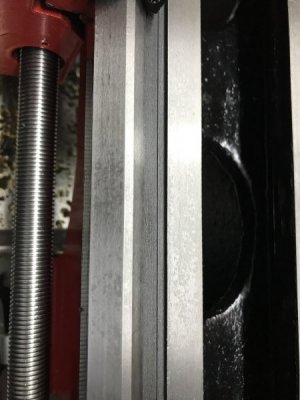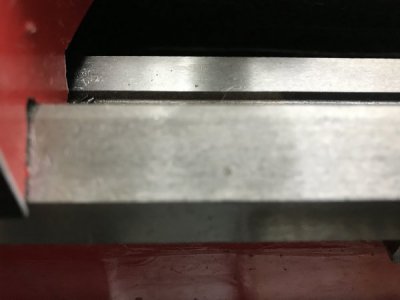- Joined
- Jul 12, 2015
- Messages
- 287
Are these stains from Vactra #2 or is it from corrosion? I have not been in my shop for a while until last night. I removed the tarp and the ways were covered with this dry brown muck. The muck readily wiped off with some WD40 but left behind this stain. In an effort to protect my lathe I slathered the ways with Vactra #2 before covering it with a tarp. Any thoughts on this? As you can imagine this is rather upsetting. My lathe lives in my unfinished basement shop so kinda damp etc.
Should I use scotch bright? What about steel wool? I tried a little section behind the tail stock with scotch bright. It works with some rubbing but, I thought I better see what you guys think.
--Chip


Should I use scotch bright? What about steel wool? I tried a little section behind the tail stock with scotch bright. It works with some rubbing but, I thought I better see what you guys think.
--Chip



